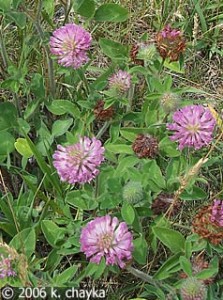 This section on landscaping offers a total of 7 points with one prerequisite; it is also the first section that started requiring more work involving calculations. When I asked our landscape architect to help with these, they wanted to charge $1,500 — am incremental cost to go for LEED Certification. Who would pay the extra amount? Certainly not us. So, I figured I can do the calculations.
This section on landscaping offers a total of 7 points with one prerequisite; it is also the first section that started requiring more work involving calculations. When I asked our landscape architect to help with these, they wanted to charge $1,500 — am incremental cost to go for LEED Certification. Who would pay the extra amount? Certainly not us. So, I figured I can do the calculations.
Anyway, this section’s intent is to avoid invasive species and minimize demand for water and synthetic chemicals. What are invasive species? According to Wikipedia:
The first definition, the most used, applies to non-indigenous species, or “non-native”, plants or animals that adversely affect the habitats and bioregions they invade economically, environmentally, and/or ecologically. They disrupt by dominating a region, wilderness areas, particular habitats, and/or wildland-urban interface land from loss of natural controls (i.e.: predators or herbivores).
I think we could put ourselves in that definition of invasive species, but some might have a problem with that position. Apparently it is also defined in U.S. Executive ORder 13112 as any species that is nonnative (or alien) to the ecosystem and whose introduction causes or is likely to cause economic or environmental harm or harm to human health. There – humans are exempt. The LEED Reference Manual says that invasive species cause economic, environmental, and sometimes even human harm by killing established trees, clogging drainage systems, overtaking and destroying the natural plant ecosystem, and resisting control without toxic herbicides. Seems like a good requirement.
The prerequisite, SS 2.1, is No Invasive Plants can be introduced into the landscape. Since invasive plant species vary by region, I needed to find the list of local invasive plants, against which we need to compare our own list of plants we are introducing: techny arborvitae, serviceberries, a few more white pines and birches, and deliberately native wildflowers and grasses (coreopsis, wild geranium, wild blue phlox, meadow parsnip, dendranthema, longfellow fescue). The term “native” can often be disputed, however, even among educated landscapers. Just because something has been here for 100 years does not make it native, does it? I initially got the list of invasive species from the Minnesota Board of Water and Soil Resources, and we are in the clear for this prerequisite.
While we did not any introduce invasive plants on purpose, I find I spend a good part of the summer trying to weed them out: dandelions, thistles, and especially clovers. I do not want to use pesticides, so I weed. I paid someone to help weed, but it did not help much, as it needs to be done constantly. This is our first house with a yard, and part of our yard is supposed to be “low maintenance” because it is a native grasses/wild flower yard, which does not require mowing or irrigation. But low maintenance it is not. Maybe in a few years it will be. I keep being told to be patient….
